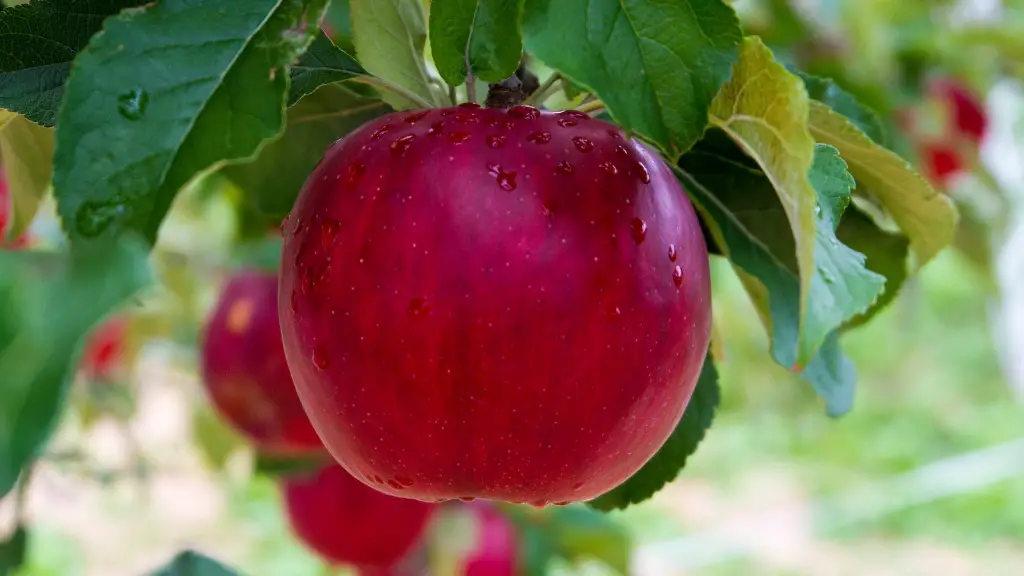Avocado trees are one of the most popular fruit trees. Most people have grown up with avocados being used in various dishes and now they are being grown in backyards across the country. With this article, one can learn the basics of what type of soil an avocado tree needs and why.
Avocado trees get their best growth and maximum fruit production when given well-drained soil. The soil should contain plenty of organic matter and be slightly acidic with a pH between 6.0 and 6.5. Nutrient-rich soil is also important to allow the tree to maximise its yield. A soil test should be conducted before planting to determine the pH of the soil and to make sure it is suitable for the specific avocado tree being planted.
Compost
Adding compost is an effective way to improve the soil for avocado trees. Compost is rich in nutrients and is made up of decomposed organic material such as vegetable scraps and spoiled fruits. Compost increases the amount of beneficial bacteria and microorganisms in the soil and helps to retain moisture. Compost also contains trace elements such as iron and zinc which can improve a tree’s health.
Mulch
Another useful way to keep soil around an avocado tree healthy is to use mulch. Mulch is a protective layer made usually of organic material such as straw, manure, leaves, or bark and prevents water loss from the soil. Mulch also helps to protect the tree’s roots from temperature extremes and adds a layer of protection against weeds and pests.
Soil Amendments
Soil amendments such as compost, worm castings, and manure can help to improve the nutrients in the soil and make them more beneficial for growing avocados. Worm castings are produced by worms which break down organic matter into beneficial nutrients. Manure and compost are also excellent additions as they naturally give soil a boost in nitrogen and other trace minerals. All these soil amendments should be applied in moderation and not used in too great an amount.
Drainage
Another important factor to consider when selecting soil for an avocado tree is drainage. Good drainage is important to the health of the tree as too much moisture in the soil can cause root rot. An ideal soil should have some clay content to help retain moisture but should still give good drainage. Standing water around the base of the tree should be avoided, which means that it is important to monitor the soil’s moisture content regularly.
Water Usage
Avocado trees are sensitive to drought conditions, so they require regular watering. Watering should be done two to three times a week during the summer months and at least once a week during the winter months. Too much water can be just as harmful as too little water, as it can cause root rot.
Pruning
The avocado tree should be pruned regularly to keep it healthy and promote fruit production. Pruning is beneficial for a tree as it encourages new growth and helps to improve air circulation. Pruning can also help to reduce the spread of any diseases by removing diseased branches.
Soil Nutrients
Giving the tree the right nutrients is essential for its growth and fruiting. Avocado trees require specific types of nutrients, such as nitrogen, potassium, and calcium. These nutrients should be applied as a fertilizer to the soil. Organic fertilizers are preferable as they provide nutrients slowly and don’t run off immediately.
Fungicides and Pesticides
In order to prevent the spread of any harmful diseases, it is important to use fungicides and pesticides. Fungicides and pesticides can be used to prevent the spread of diseases, fungi and pest infestations. They should only be used as a last resort, as they can be damaging to the environment.
Harvesting
Harvesting of avocados is done when the fruit is completely ripe and ready to eat. This is usually done when the fruit has become dark green in colour and can be picked from the tree by simply twisting it off.
Pests and Diseases
It is important to regularly check the tree for any signs of pests and diseases. Common pests include scale, mealybugs, and whiteflies. Common diseases include root rot, heart rot, canker, and leaf spot. Taking preventative measures such as regular pruning and fertilizing can prevent these pests and diseases from becoming a problem.
Insects and Diseases Control
Controlling insects and diseases is crucial to the health of an avocado tree. This can be done through the use of physical barriers such as netting or chemical controls such as pesticides. Insects such as aphids and whiteflies can be controlled by introducing beneficial insects such as ladybugs which feed on them. Diseases can be controlled by removing any affected branches or keeping the area around the tree free from debris which may act as a breeding ground for fungi and bacteria.
Fertilizing
Fertilizing is important for an avocado tree as it gives it the nutrients it needs to grow. Fertilizers should be applied twice a year in order to maximize the yield of fruit. The use of organic fertilizers is preferable as these are less damaging to the environment.
Irrigation
Avocado trees need regular irrigation to ensure they remain healthy and productive. Irrigation should be done twice a week, in the morning and evening, and the amount of water should be adjusted depending on the season. Too much or too little water can cause the tree to become stressed and decrease its yield.
Protection from Frost and Freeze
Avocado trees are sensitive to temperatures below freezing, so it is important to protect them during colder periods. This can be done by using frost cloths, heaving mulch, or windbreaks to protect them from the wind. It is also important to keep an eye on the temperature of the soil and to water thoroughly to keep the roots from becoming frozen.
Soil Erosion Control
Soil erosion can be a serious problem for avocado trees and can cause the tree to become stressed. Erosion can be prevented by keeping the soil around the tree free from weeds and vegetation that can cause the soil to erode away. Covering the soil with mulch or compost can also help to prevent erosion as it absorbs rainwater and prevents it from washing away.
Pruning Trees
Pruning avocado trees should be done regularly and is an essential part of the tree’s maintenance. Pruning is necessary to remove any dead or diseased branches and to promote healthy new growth. Pruning should be done during the summer months when the tree is in an active growth cycle. A good rule of thumb is to prune each branch back by one-third of its length.
Fertilizers For Avocado Trees
Fertilizers are important for avocado trees as they provide the necessary nutrients to keep them healthy and productive. Fertilizers should be applied twice a year and the best time for this is during the spring and summer months. Organic fertilizers such as manure or compost are preferable as they are less damaging to the environment. A balanced fertilizer should be used to ensure the tree has all the essential nutrients it needs to maximize their yield.
Planting Avocado Trees
When planting avocado trees, it is important to take into consideration various factors such as soil quality, drainage, fertilizer, and location. The soil should be well-drained and slightly acidic with a pH level between 6.0 and 6.5. Adding compost and mulch can help to improve the soil around the tree. The tree should also be planted in an area with plenty of sun, away from any frost pockets.
Avocado Tree Maintenance
Avocado trees require regular maintenance to keep them healthy and productive. This includes pruning, irrigation, fertilizing, and protecting from pests and diseases. Pests and diseases should be controlled through the use of physical barriers or chemical controls. As with any other fruit tree, regular pruning should be done to promote healthy new growth and increase the yield of the tree.
Conclusion
Selecting the right kind of soil for an avocado tree is essential for its growth and prosperity. The avocado tree thrives best in well-drained, nutrient-rich soil with a slightly acidic pH level. Compost, mulch, and soil amendments can be added to give the soil a boost in nutrients. To keep the tree healthy, regular water, pruning, and fertilizing should be done. Pest and disease control is also important, as is protecting the tree from any frost and freeze. Proper soil and tree maintenance will ensure the tree’s highest yield and success.




